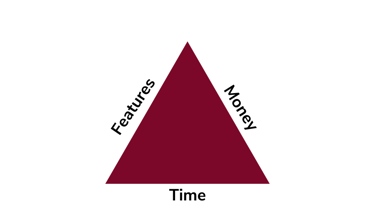A decade or so ago, an article from Forbes declared the end of IT outsourcing was upon us and for a while, there was quite a bit of truth in that statement. That is until Covid 19 and the global pandemic.
Quickly, we all became more reliant on technology whether it be e-commerce for shopping or food delivery or any number of activities that we were no longer able to do in person.
And, because of those needs, the technology infrastructure within companies became overwhelmed.
"Covid-19 fast-tracked digital transformation for global companies by an average of six years."
-Jeff Lawson, Twilio CEO
With the acceleration of technology, outsourcing teams is not just acceptable these days it is a smart move to make. But, before you engage with an outsourced group, there are six things you should know to ensure your organization will be successful with an external team.
Iterative Process
Look for a team that has a process. Don’t just hire a cowboy coder. You can’t afford to have a solution winged. You need someone that can take you through how to solve your problem. You need a strategy map in order to know where you are in the process at all times.

At Airship, we believe in Agile methodology and we use the Scrum Framework. We work in an 8 to 12-week development cycle. What does this mean to you? It means we start with your problem statement, finalize your objectives, and determine a strategy through a series of activities. Then we work in 2-week sprints within the larger cycle to move towards achieving your objective. Along the way, we ask questions and show you where your project stands so you are never surprised and are involved in every decision along the way.
It is important that you do not have a fixed price mindset. Remember, there are multiple ways to reach your objective and once your project begins, you will be faced with decisions that can make your project better and those decisions may add time or money, or features. It is also possible that the decisions you make shorten your timeline, subtract features, or cost less. You want the team you collaborate with to be able to tweak based on what they learn as they are building. This does not mean your project doesn’t have a budget. It means that there is flexibility which all relates to the next item on our list…
Time, Money, Features
One of these will be the most important aspect of your project. You need to know which one is critical. This goes back to the strategy piece. If you have a tight budget then features and time will shift. If you have time then your budget and features may change. Look for a team that understands these 3 levers and how to pull them to successfully reach your objective. If you don’t, you will have unmet expectations. Those unmet expectations can lead to unnecessary angst and potential miscommunication.

Perspective
Hiring an outsourced team gives you the ability to inject a different perspective into solving your technology problems. If your internal team has been with your company for a long period of time they may lack a sense of innovation and be stuck in the box they have built. Using a team who have worked on a variety of projects in a wide range of industries will bring in knowledge and lessons learned that you may not have with your internal team.
Seek out an outsourced team that has a lot of different experiences. Their accumulated knowledge will be able to generate multiple solutions based on their prior projects. By having varied ways to reach your objective, the team can determine the best fit for your project.
Training and Technology
We know the only thing constant is change. And, technology changes quickly. You want a team that is grounded in technology that is proven yet evolving. You don’t necessarily want the shiny object, you want to use a technology that is maintained. When reviewing outsourced teams, make sure they have a tech rubric (see Airships tech rubric) that help them vet what they use. Ask them how they choose the technologies because you aren’t building a solution for your problem today, you want the solution to be around for a long time.
Ask how they keep their developers up to date. At Airship, we give everyone 4 hours per week of dedicated learning time to keep their skills fresh and their abilities ever-improving.
Speed of Decisions
This is the decision around onshore and offshore development. If you have a strong CTO and a lot of experience and are clear on what you are trying to achieve - then perhaps offshore development will work for you. However, if you aren’t highly technical with an experienced internal team, offshore development can be a disaster in the making.
Custom Software Development can move quickly. Decisions are made that change the path of how an objective will be reached. If you have a 14 hour time difference, there can be a lot of wasted time and/or wasted effort.
Offshore development may seem less expensive but in our experience, it ends up costing prohibitively more. Many times over the years, we have had clients bring us a project that they had tried to get developed offshore only to have nothing to show for the time and money they had spent.
Finish Faster
Last but not least, utilization of an outsourced team allows projects to be put into the world faster. Find a team that works alongside you that doesn’t need to have their handheld that can catch your vision and move forward quickly.
At Airship, we work within a squad model. When you come on board, you are assigned a product manager, we call them Navigators. Your Navigator along with the rest of the squad will meet with you to determine your objectives. Then every 2 weeks, you will meet to review and revise based on what has been built and learned. Adjustments are made based on your decisions and priorities until your objective has been met.
Have questions based on this blog? Click the link below and let’s talk.


